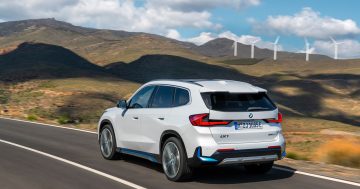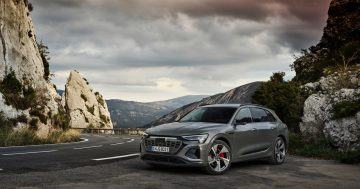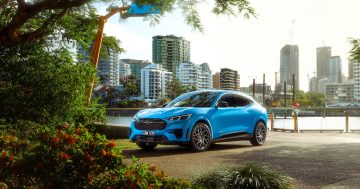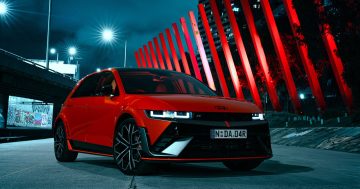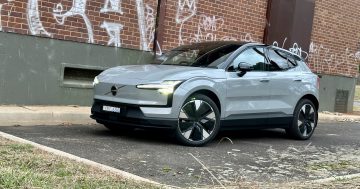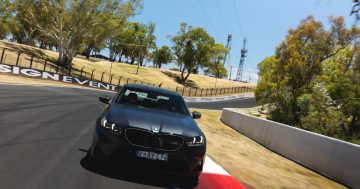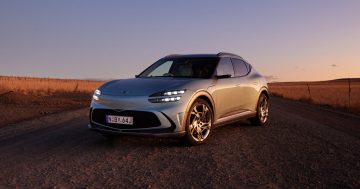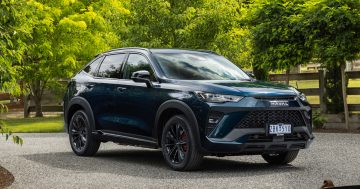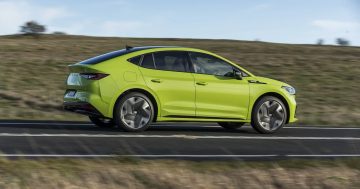By Paul Gover.
 Polestar could not have picked a better time to lob its cars into Australia.
Polestar could not have picked a better time to lob its cars into Australia.
The whole country is worried about petrol prices and a growing number of people are looking towards electric as the solution – even in the short-ish term – to the challenges of 21st century motoring.
Against that backdrop, the battery-electric Polestar 2 is almost certain to be a sellout.
It’s a good price, starting from just on $60,000, and it has an enviable Volvo connection with backing – and technology – from Geely, one of China’s biggest car making conglomerates.
It goes head-to-head with the Tesla Model 3, which has been Australia’s top selling battery-electric car, but with a totally different body style and, thanks to a very recent price increase by the American maker, a significant bottom-line advantage.

Look at the Polestar2 and it’s instantly a Volvo.
Look inside the Polestar2 and it’s even more a Volvo.
Look under the skin of the Polestar 2 and you find . . . the Volvo XC40.
None of that is bad, and for many people it will be a significant drawcard. The same as a crossover body style that’s a kinda SUV and a kinda hatchback, a bit like the Ford Puma but without the youthful funk of the blue-oval baby.
Polestar is doing a full-on job for Australia with some smart ‘permission to buy’ items, from a seven-day money-back guarantee and sharp deals on finance to a guaranteed future value.
That is partly compensation for a new-age sales model that’s mostly online, although Polestar is currently mounting a major road-trip demonstration drive to put people behind the wheel.
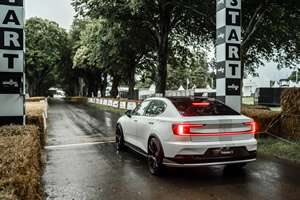
Jumping into the Polestar 2, it’s impossible for me to ignore the evolution of the name and brand. How ironic that was once the muscle-car connection for Volvo, with some seriously quick sporty sedans, is now the electric halo?
It’s also impossible to ignore the Volvo connection, even without worrying about the XC40 chassis – that’s been hugely tweaked for the battery connection – under the skin.
The design is very Volvo and so is the impressive interior finishing work.
People buying into the Polestar lifestyle are most likely to be early adopters, since it’s not cheap or as advanced as upcoming Polestar models including a proper electric sports car.
But the pricing is sharp for the single-motor model with standard battery. For context, that means a front-wheel drive car with a single electric motor, a 69 kiloWatt-hour battery, 170 kiloWatts/330 Newton-metres, and a claimed range of 440 kilometres with a 0-100km/h sprint time of 7.4 seconds.

Going all the way up the line to a twin-motor model with all-wheel drive and the biggest battery means more than 480 kilometres of range, 300 kiloWatts of power, 4.7 seconds to 100km/h, and a basic price of $69,990 before on-roads.
There are options package, including the Pilot Package – that should be standard but would hurt the bait of the basic price – with radar cruise control, brilliant Pixel headlamps and a 360-degree parking camera system.
Even the basic car gets an 11.2-inch vertical infotainment screen and punch 250-watt sound system, as well as an electric tailgate, dual-zone aircon and 19-inch alloys.
One big surprise – actually it’s giant – is there is no starter key. Sit down with the remote key inside the cabin and the car is ready to go, thanks to a pressure sensor – Polestar flat refuses to disclose the trigger figure – in the driver’s seat.
After sampling both the single and dual-motor models, the sweet spot is (no surprise) the long-range battery with single motor. That means a basic price of $64,900.
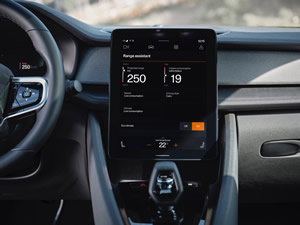
The range is well over 500 kilometres and that’s more than enough for almost everyone, particular with regular home top-ups, while the performance is crisp without going crazy.
The dual-motor Polestar 2 is seriously fast in a straight line, like all electric cars, without remotely rivalling the Porsche Taycan which is a personal benchmark. But who needs that in an SUV-ish family car.
It also ticks the safety box with a 5-star ANCAP score.
The all-round package is smart and sensible, good value for a current electric car, and – although not remotely as futuristic in style or execution as the Hyundai Ioniq 5 – easy to recommend to someone considering a Tesla 3.
The Polestar is a convincing electric car with a proven automotive heritage, not just a futuristic science experiment, and that means it will go well in Australia and lay the foundation for a brand which promises a big future.
POLESTAR 2
Position: design-driven electric car
Price: from $63,000 drive-away
Engine: electric motor
Power: 170kW/330Nm
Transmission: single-speed front-wheel drive
Plus: great design, quality, electric
Minus: new sales model, not a clean-sheet car
THE TICK: A smart choice
Score: 8.5/10


